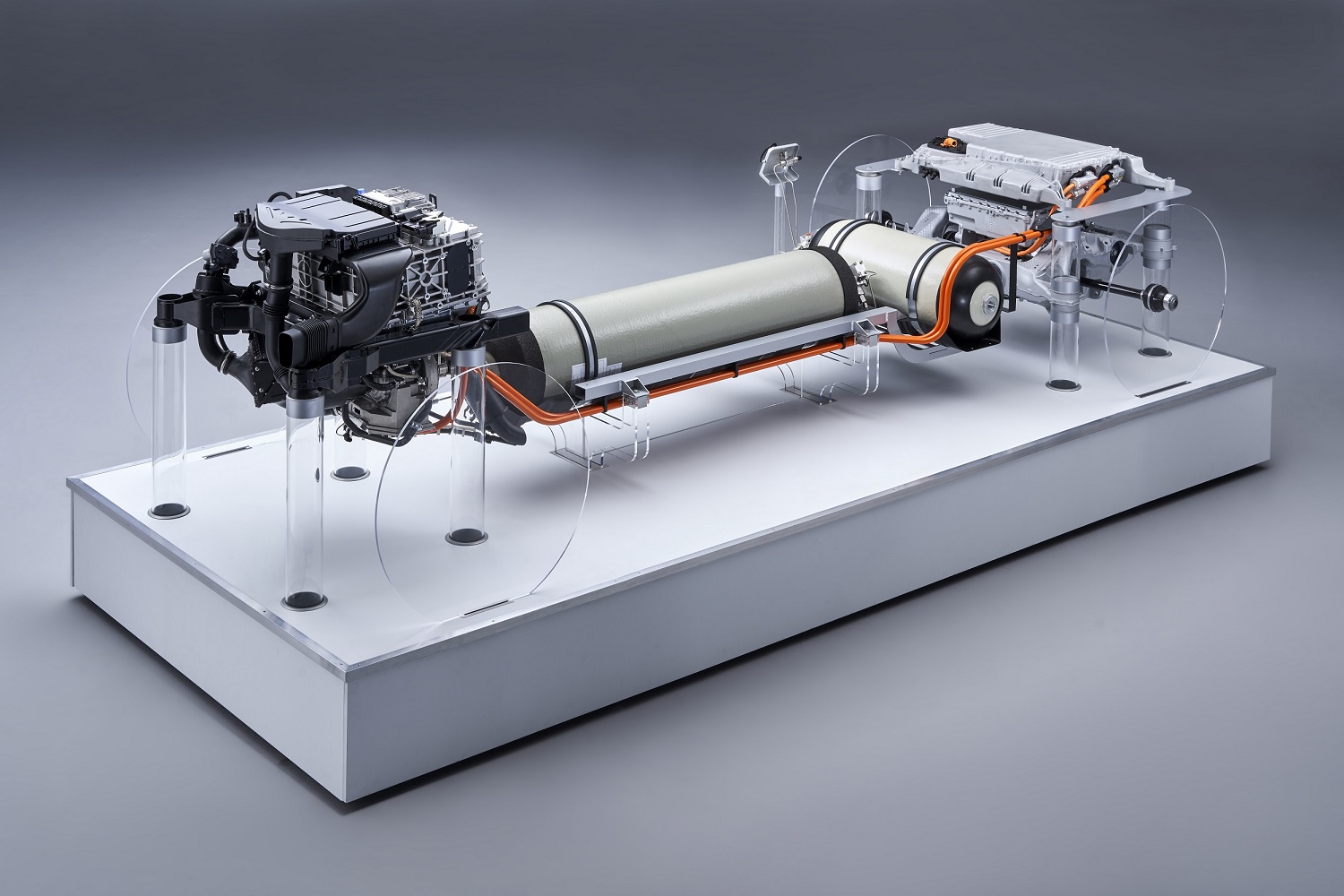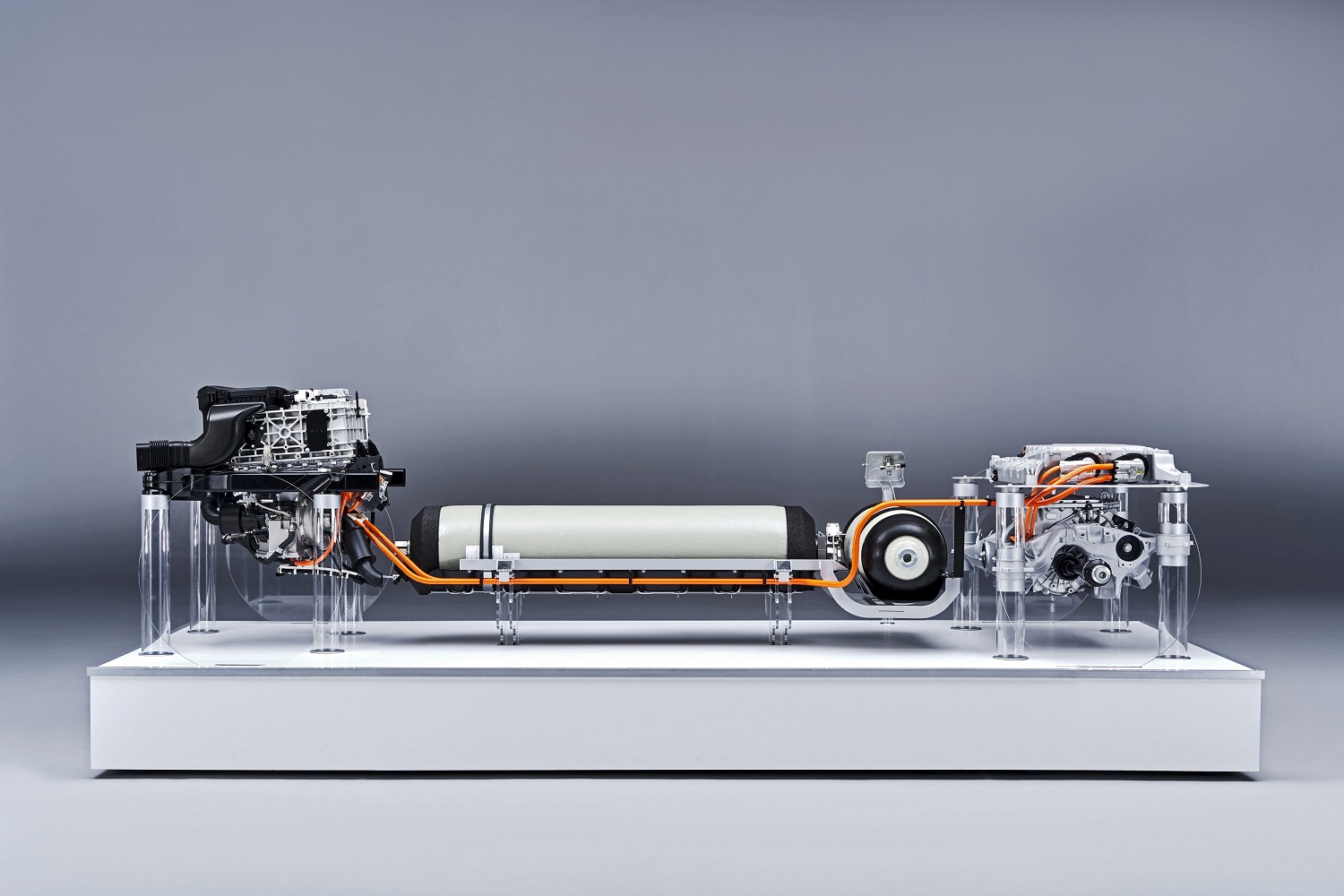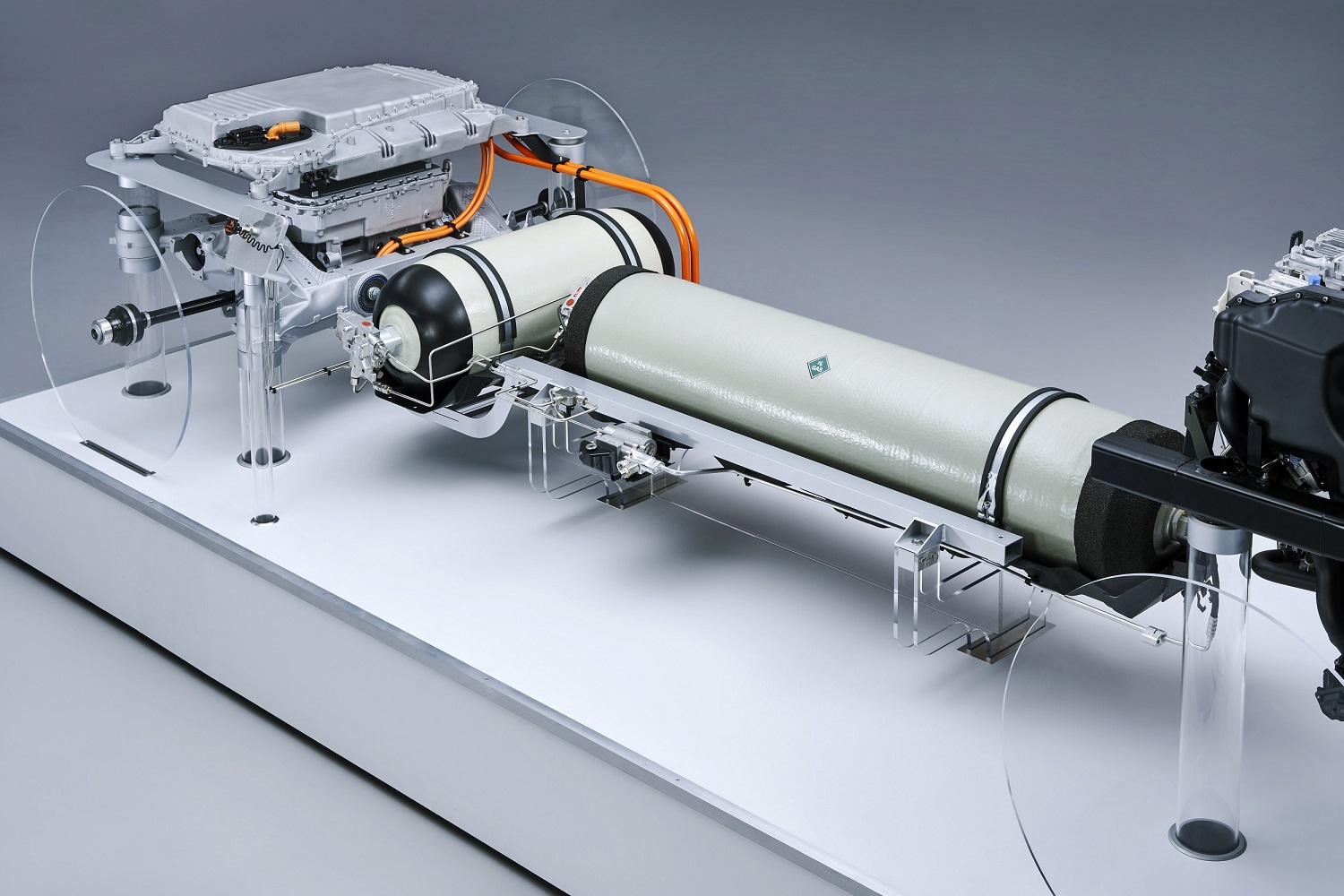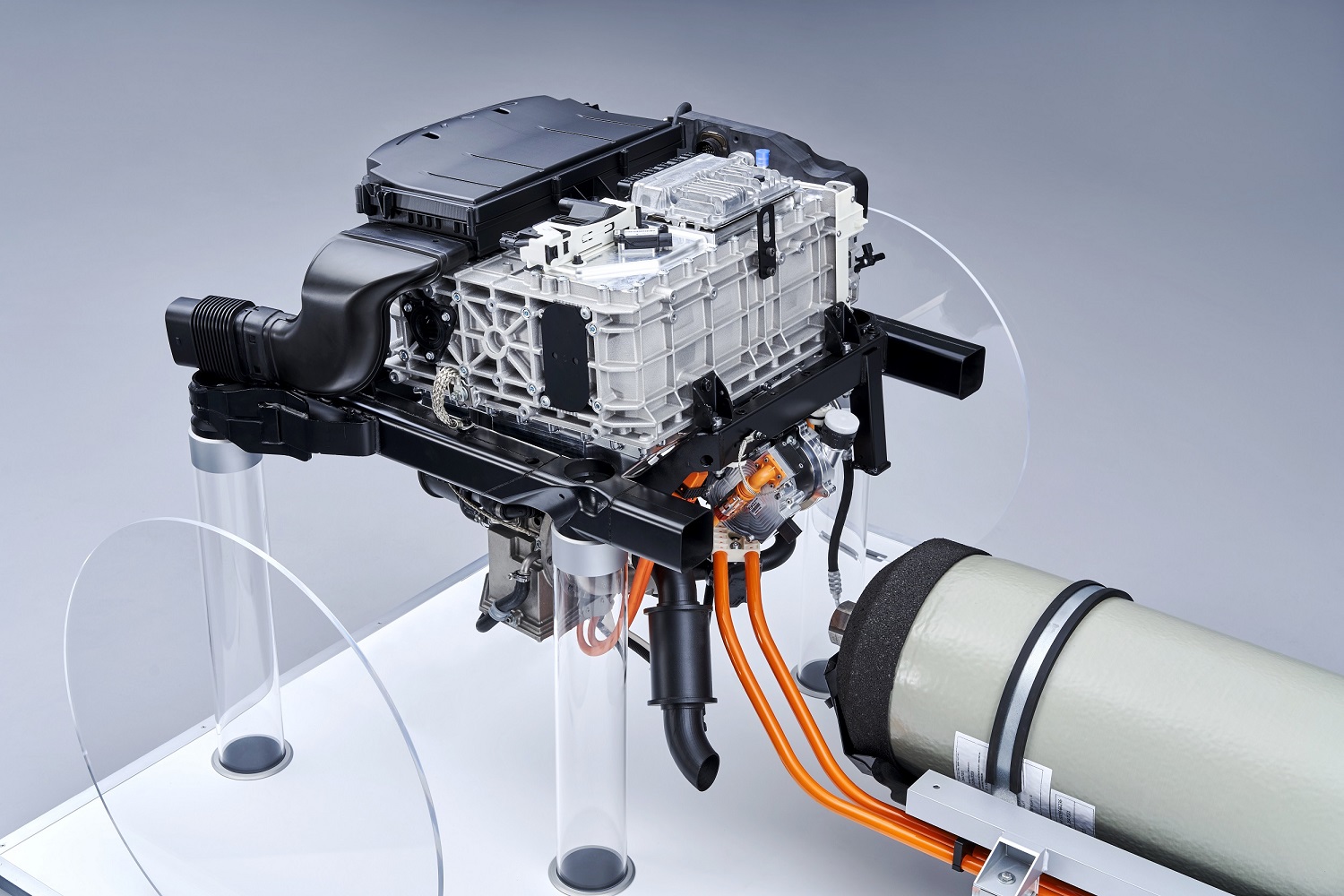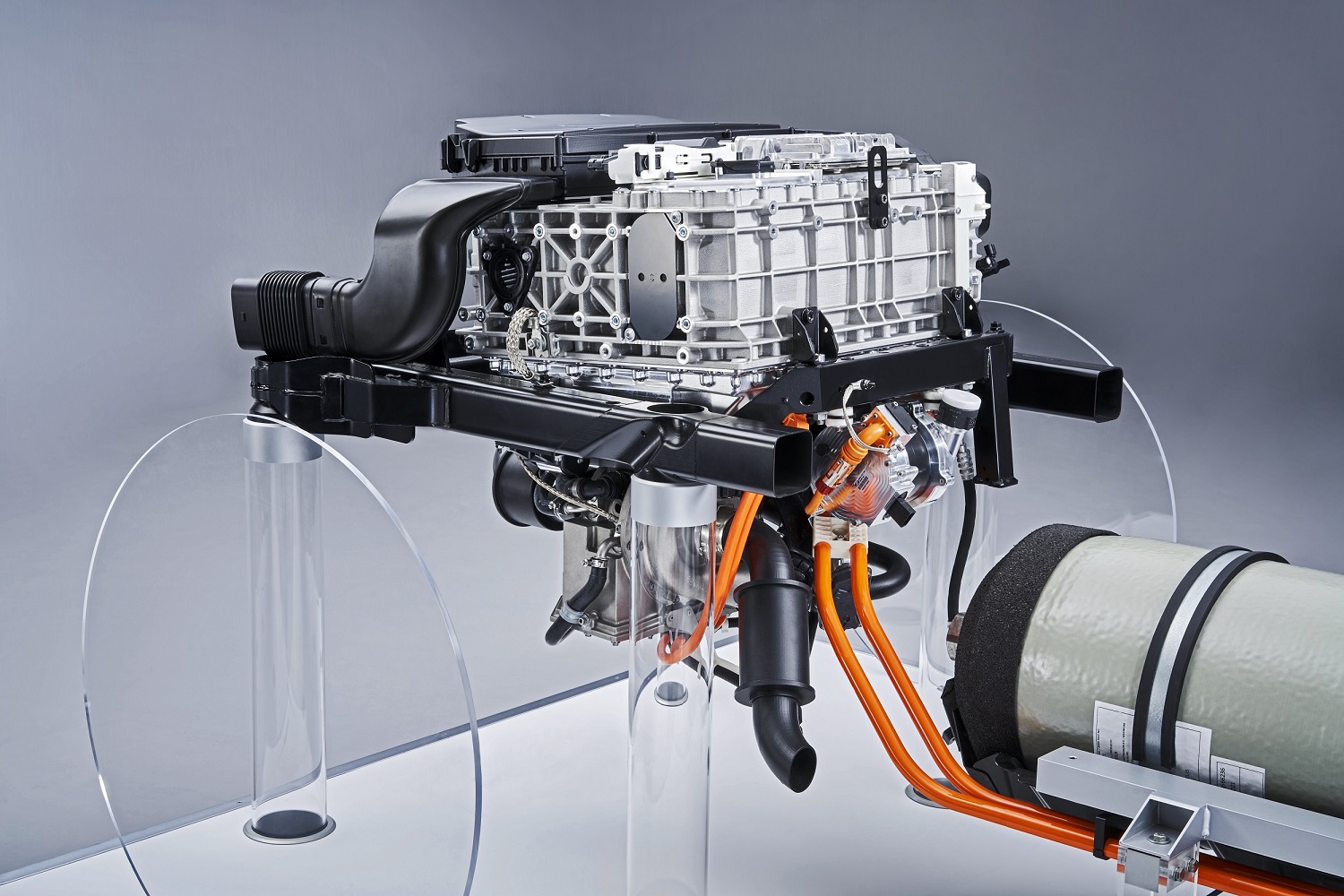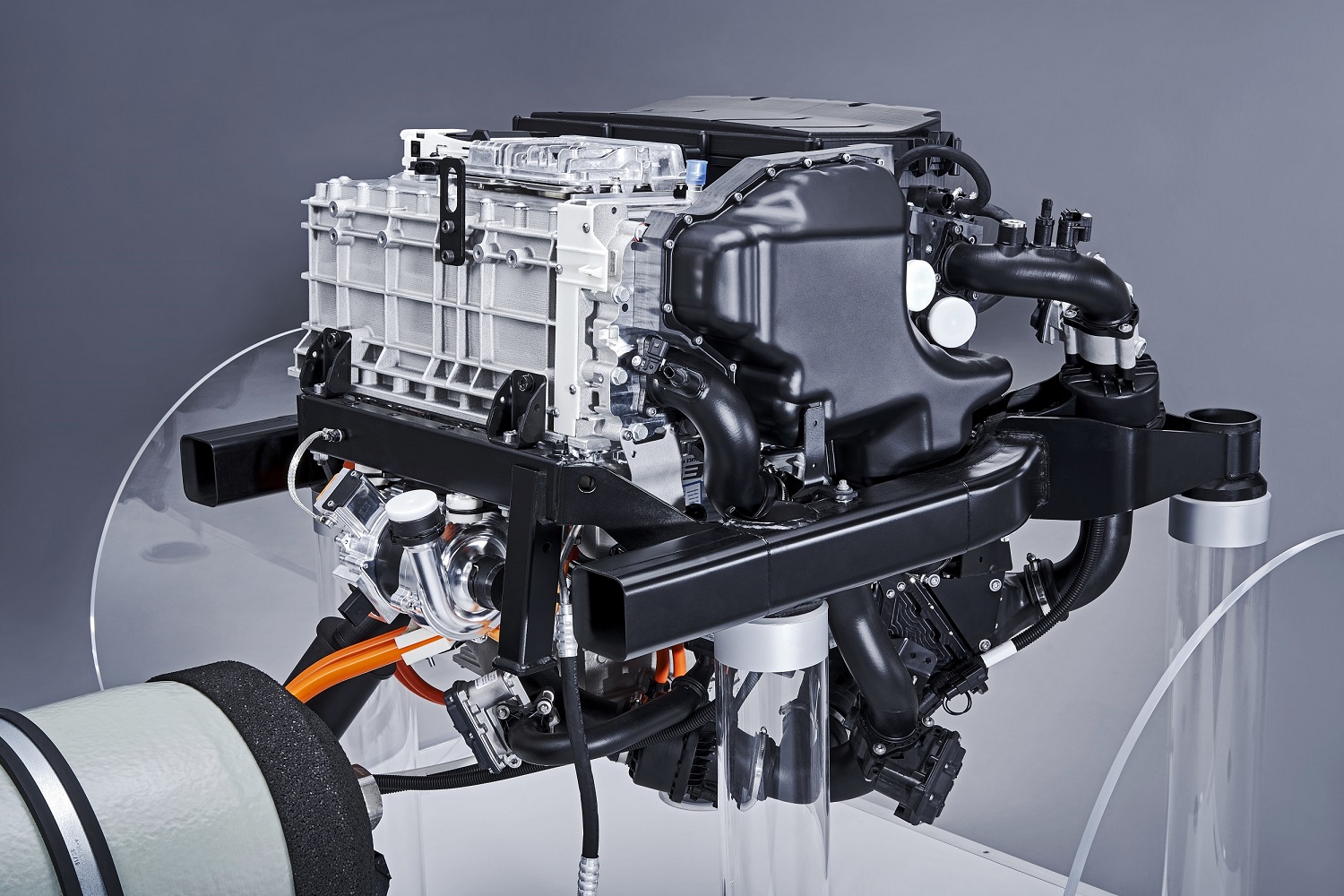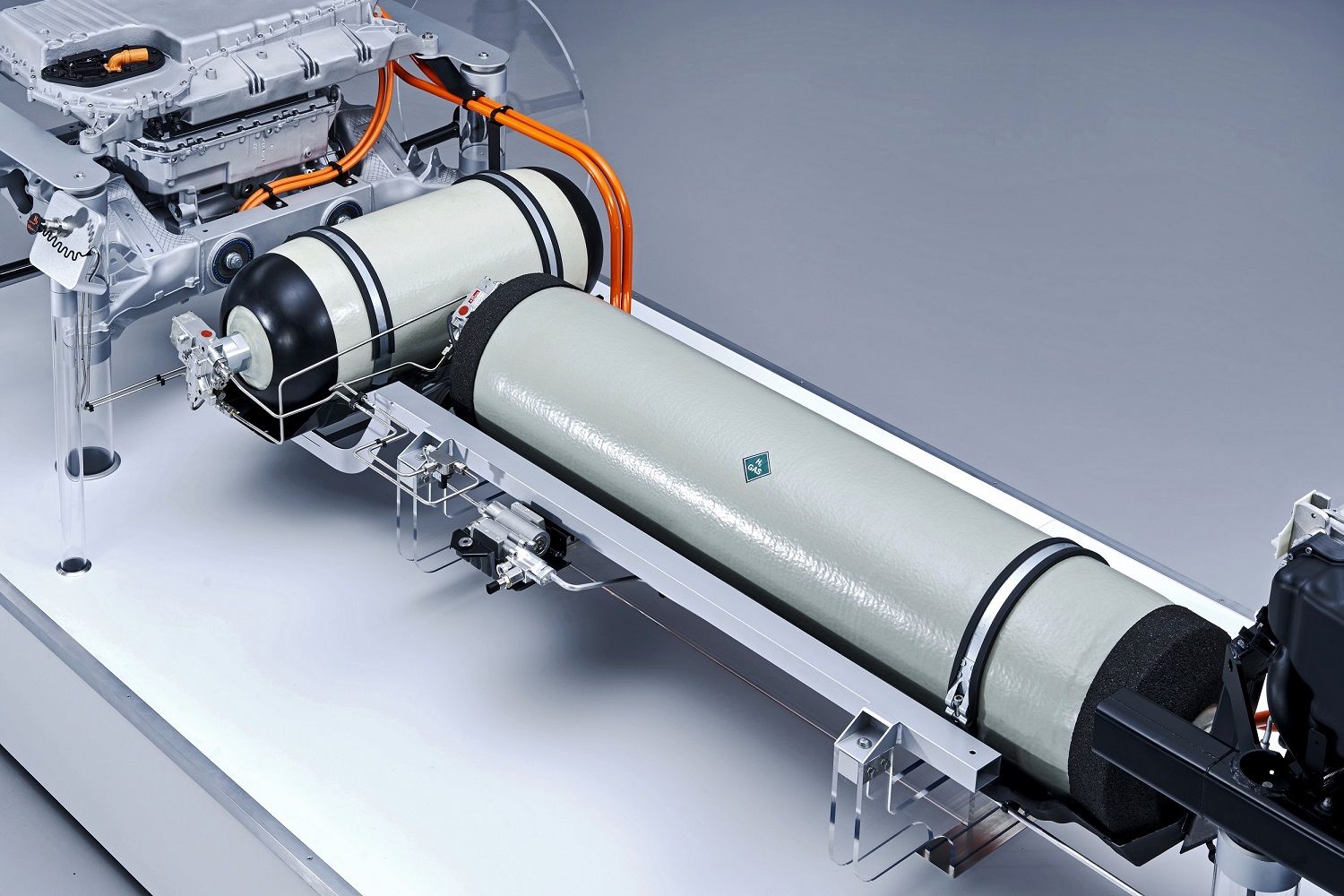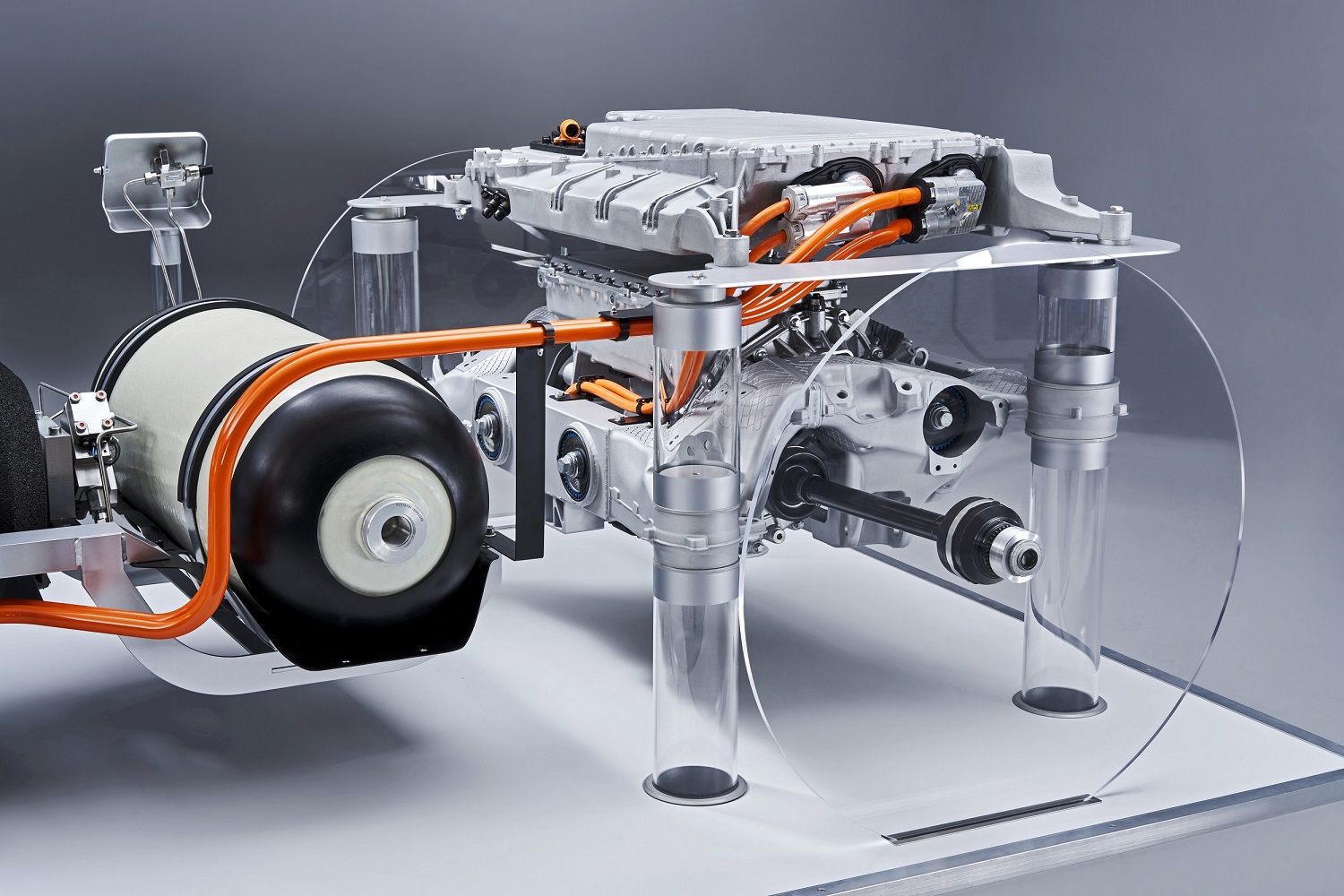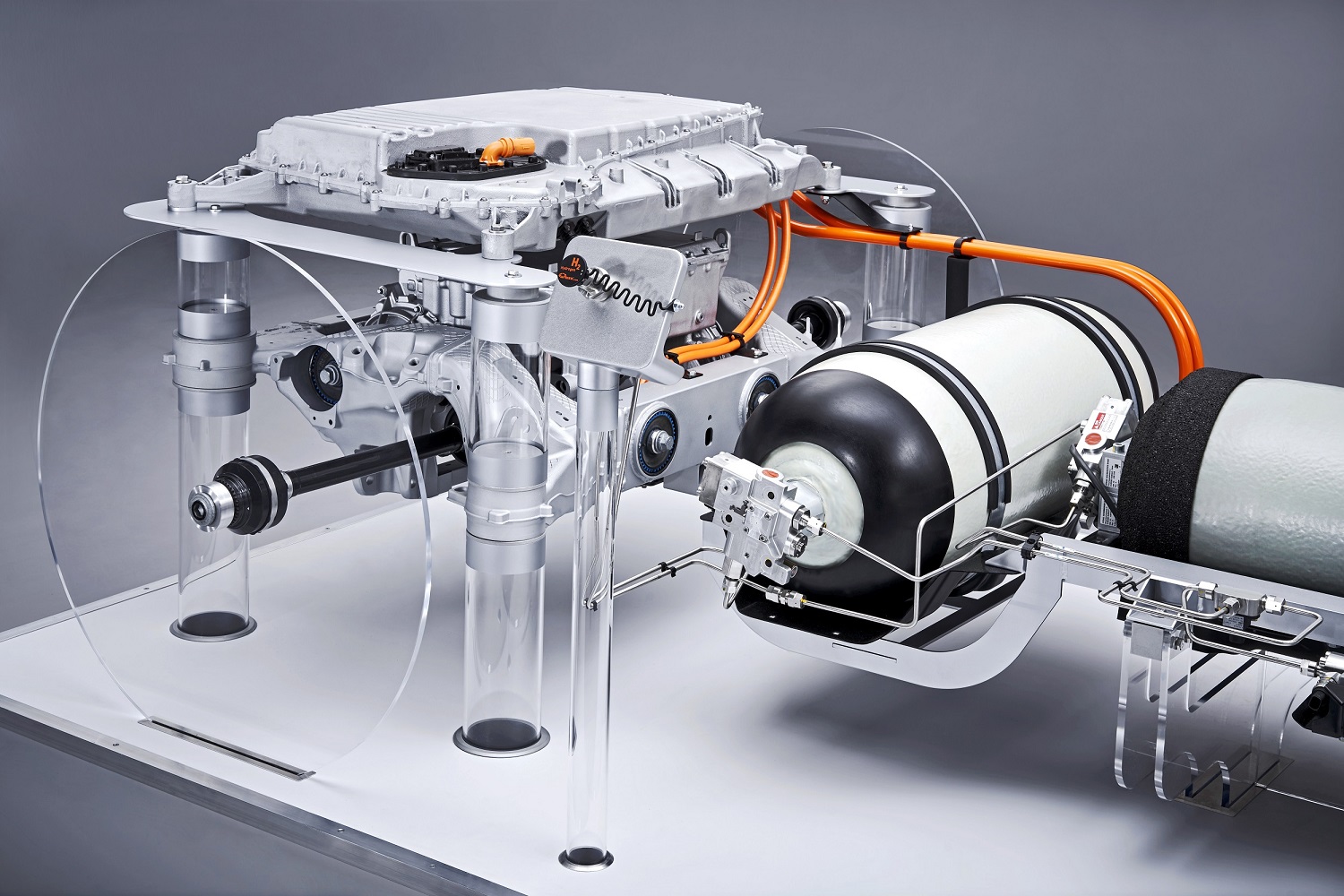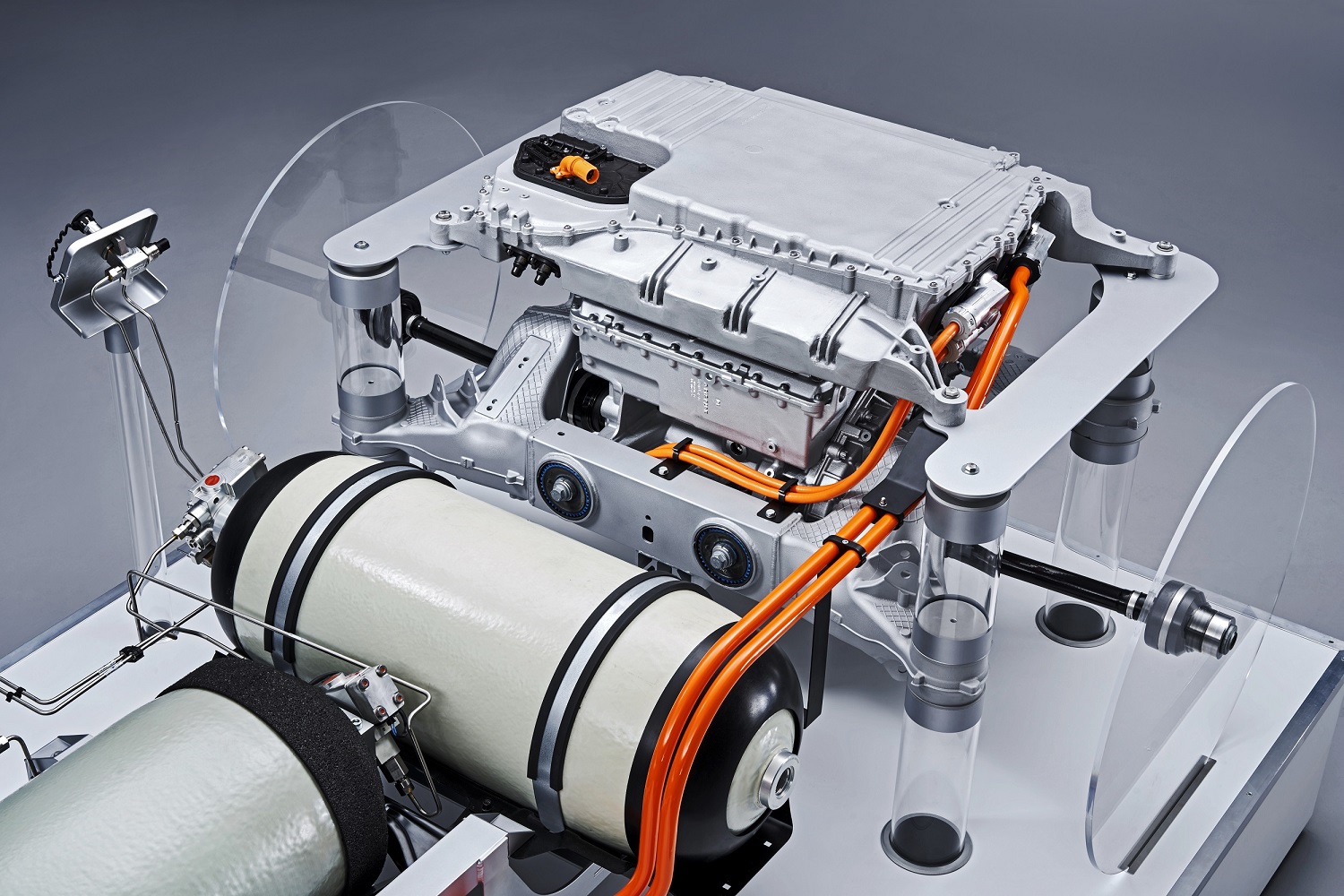Most of BMW’s recent product announcements have been about electric cars, like the i4 sedan and the iNext SUV, but the Munich-based company remains committed to bringing hydrogen-electric technology to the mainstream. It released preliminary specifications about the powertrain it’s developing for an experimental SUV.
The system consists of four main components: Two tanks that store about 13 pounds of hydrogen combined, a fuel cell that generates electricity, an electric motor, and a peak power battery. The fuel cell uses the hydrogen stored in the tanks and oxygen it sucks out of the air to generate electricity. It then sends it to the electric motor to spin the drive wheels. It also charges the peak power battery, which provides a temporary acceleration boost when needed.
BMW pegged the system’s output at 170 horsepower, though that figure increases to 374 when the overboost function kicks in. It emits harmless water vapor, so it’s considered a zero-emissions drivetrain, and refueling the tanks takes three to four minutes. The powertrain’s maximum driving range hasn’t been communicated yet.
The powertrain you see in our gallery will reach production in 2022, but there’s a catch. It will go into a small handful of X5-based prototypes built to gather data about the technology, and we don’t know if they’ll be put in the hands of real-world customers yet. Looking ahead, BMW explained it could release a mass-produced hydrogen-electric model in the second half of the 2020s if the demand is there, if the infrastructure develops, and if it finds a way to produce hydrogen in a clean and cost-effective manner. You’re not alone if you’re thinking that’s a lot of ifs.
“The hydrogen fuel cell technology could quite feasibly become the fourth pillar of our powertrain portfolio in the long term. The upper-end models in our extremely popular X family would make particularly suitable candidates here,” explained Klaus Fröhlich, BMW’s research and development boss, in a statement.
The odds aren’t in hydrogen’s favor, but BMW stressed that the technology is worth investing in because it offers several advantages compared to pure electric cars. Whatever range the company’s drivetrain provides won’t be severely affected by extreme weather, which can reduce an electric car‘s drivability, and the four-minute refueling time is about on par with a gasoline engine’s. Speaking of, it’s not going away anytime soon, according to BMW.
“We are convinced that various alternative powertrain systems will exist alongside one another in future, as there is no single solution that addresses the full spectrum of customers’ mobility requirements worldwide,” Fröhlich said.
